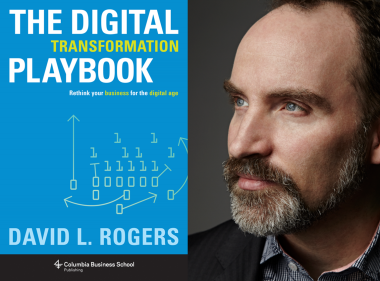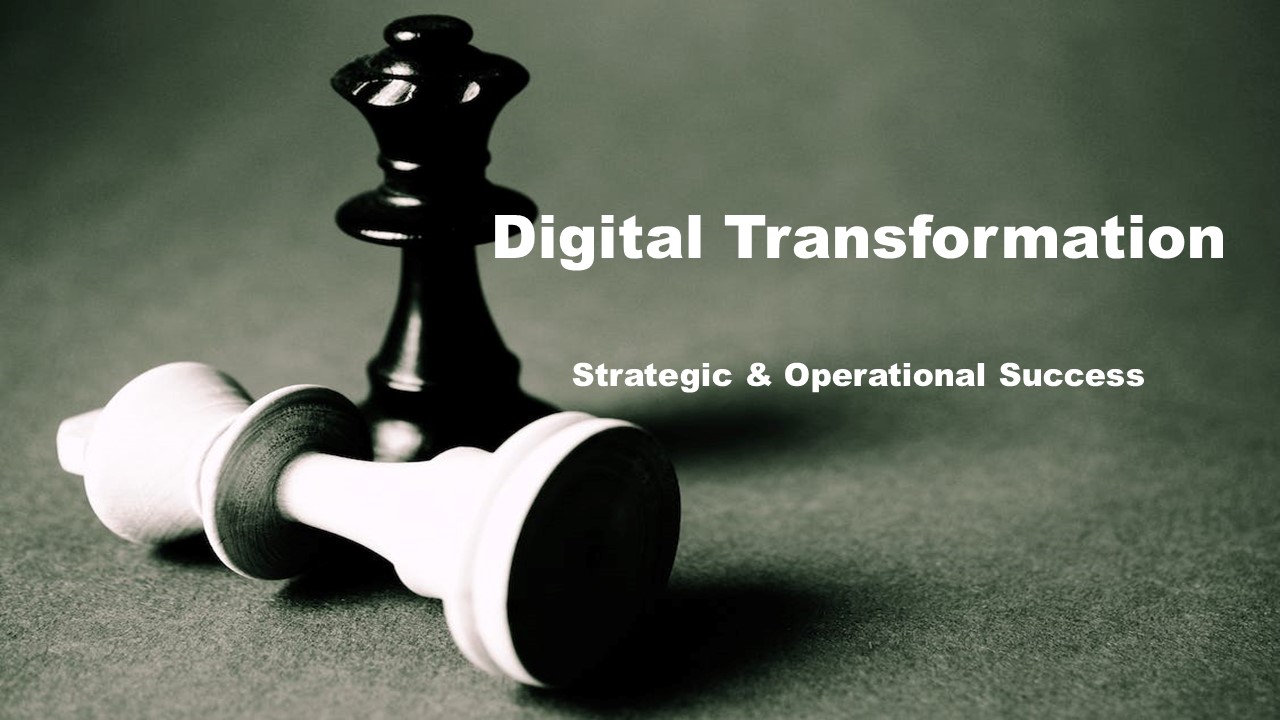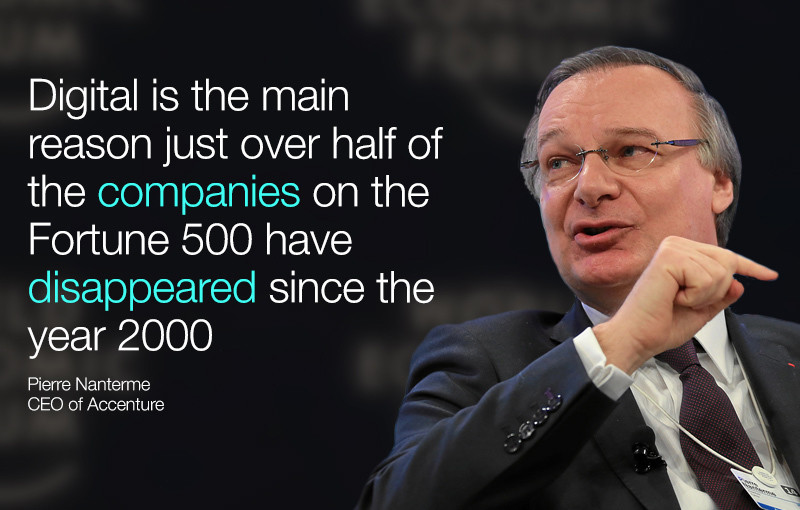A Playbook for Managing Digital Transformation
Posts by:


In the fast-changing digital landscape of today, businesses must undergo digital transformation in order to remain competitive and relevant. It has become a necessity rather than a luxury, as organizations that fail to adapt run the risk of being left behind. Digital transformation refers to the integration of digital technologies into an organization, with the aim of enhancing productivity, efficiency, and sustainability. The term gained significant attention during the COVID-19 pandemic and represents a broader cultural shift towards agile and intelligent business practices. Core transformative technologies such as artificial intelligence (AI), big data, and the cloud are widely applied across various industries, while sectors like manufacturing are embracing specialized robotics. Many companies have already embarked on their digital transformation journey, with nearly three-quarters of global organizations citing it as their top IT priority in 2022, a significant increase from around half in 2021.
The Focus on Cloud Technologies
Global spending on digital transformation surpassed $1.59 trillion in 2021, experiencing a growth of over 20 percent compared to the previous year. The pandemic played a crucial role in driving digital transformation efforts, as businesses embraced cloud technologies due to the rise of remote work. Adapting existing IT solutions through cloud extensions emerged as the most common approach to digital transformation worldwide in 2022. The global public cloud market is estimated to have exceeded $490 billion. As of 2022, nearly 90 percent of organizations worldwide had implemented cloud technologies, marking the highest adoption rate among all emerging technologies.
Artificial Intelligence (AI) Adoption
Artificial intelligence represents the forefront of digital transformation initiatives, but the adoption rates of AI technologies vary significantly across business sectors. The technology and telecommunications sector leads the way with high adoption rates in product and service development, while the financial services sector has embraced AI for service operations. When effectively implemented, AI and machine learning enable intelligent decision-making for executives through predictive modeling and enhance customer service through personalization and automated chatbots. However, the complexities associated with AI implementation present challenges for smaller organizations with limited budgets, setting a high bar for entry.
Workforce Transformation
The widespread adoption of new digital processes has prompted organizations to reassess the role of their workforce, as certain technologies require specialized skills and competencies. While new hires are often integral to business transformation, an increasing number of organizations prioritize upskilling or reskilling existing employees through learning and development programs. For instance, a quarter of organizations worldwide planned to implement data analysis or analytics programs in 2022, up from 18 percent in 2021. Additionally, 30 percent planned to run digital fluency or transformation programs. Digital upskilling is seen as crucial for employees to succeed in the job market, with a particular emphasis on learning digital skills in emerging economies such as India and China.

Digital disruption and transformation are reshaping the business landscape, making it more important than ever for companies to have a board of directors with the right skills. In this article, we will explore the benefits of digital transformation and what to look for when appointing a digital transformation director. Whether a company is a start-up or a well-established enterprise, understanding the impact of digital disruption and having a board with the right skills is crucial for success in today's rapidly evolving business environment.

According to the World Economic Forum by 2025, 85 million jobs will be displaced by automation and technology but 97 million new roles will be created by 2025 as humans, machines and algorithms work together. These include robots to aid physical activities such as coral reef conservation, drones to deliver much needed medicine to remote locations, generative artificial intelligence to create new media and automation to remove routine tasks.
How Will We Get There?

When asked, many organisations think leveraging artificial intelligence (AI) will help them achieve their growth objectives. But does your organisation fully understand the power of AI and the benefits it can bring to your business?

I recently read Hubspots State of Marketing 2022 UK report, showing the focus and importance that influencer marketing occupies in the minds of the marketing community. But in a world where anyone can use generative artificial intelligence (AI) to create their blogs, videos and podcasts, this raises significant questions:

The pharmaceutical industry is rapidly evolving with the introduction of Industry 4.0, which refers to the fourth industrial revolution characterized by the integration of digital technologies into manufacturing processes. The use of digital transformation in the pharmaceutical sector is bringing about numerous opportunities and challenges. This blog aims to provide young professionals working in the pharmaceutical sector with an overview of Industry 4.0 in pharma, how digital transformation is impacting the sector, key technologies to watch out for, key skills that employers want graduates to have and tips to grow a career in pharmaceuticals.

I recently saw a Twitter post where a user described ChatGPT as the most powerful AI tool out there. Sure, it's clickbait (and misleading) but I want to explore how people can overestimate the potential of new technology. This leads to massive investment, media attention and hype before people's expectations decline to a more realistic level. In this article, I will use the Dunning–Kruger effect to show that people generally start off overconfident in their ability (to the potential of new technology) before truly understanding something new. Let's apply this to people's responses to the power of ChatGPT. Image source HFS.

Artificial Intelligence has had a significant impact on organizations across customer service, marketing, product development, and employee training. Now, tools like ChaptGPT, Midjourney and DALL·E have made waves in the media. People/organisations are scrambling to use them while academics struggle to protect academic integrity.

In this article, we will explore the impact of generative AI on organizations and workforce, highlighting the benefits and concerns. We will explore how organisations can prepare staff for changes using upskilling and training programs, creating new roles, and leveraging AI to create new job opportunities.

In today's rapidly changing digital landscape, businesses need to be proactive in adapting to new technologies and trends in order to remain competitive. Digital transformation refers to the integration of digital technology into all areas of a business, leading to fundamental changes in the way it operates and delivers value to customers. This process can bring numerous strategic and operational benefits, but it's important to approach it with a well-thought-out plan. In this blog, I will discuss the strategic and operational benefits of digital transformation and key factors for organizations to consider when planning their digital transformation journey.
Generative AI refers to a type of artificial intelligence that uses algorithms to create new data that is similar to existing data. This is in contrast to traditional AI models, which only classify or analyze existing data. Techopedia describe generative AI as broad label that's used to describe any type of artificial intelligence that uses unsupervised learning algorithms to create new digital images, video, audio, text or code. According to McKinsey, generative AI and other foundation models are changing the AI game, taking assistive technology to a new level, reducing application development time, and bringing powerful capabilities to nontechnical users.

As the role of the CIO continues to evolve and become increasingly complex, it is important to be able to effectively navigate uncertainty and adapt to change. Digital technology has not only disrupted traditional business models, but it has also fundamentally transformed the way that leadership is approached and executed. According to research from Gartner, successful digital initiatives require significant shifts in technology leadership and a willingness to embrace new ways of thinking and problem-solving.

While we are in strange times a new normal is emerging fast. Staff are working remotely, families are hosting Thursday night quizzes online and lots more people are using this time for Continuous Professional Development (CPD). As many higher education institutions and corporate training providers flex to this adjustment, it is worth taking a moment to recap on these top tips for lecturers and training providors to deliver engaging online sessions for their participants.

While you sit in a local coffee shop attending a conference call or respond to emails on the train, it's hard to believe that just over a century ago the steam engine was the pinnacle of technological advancement. It revolutionised transport, manufacturing and energy generation. Today, technology is seamless integrated into our lives but it wasn't always the case.